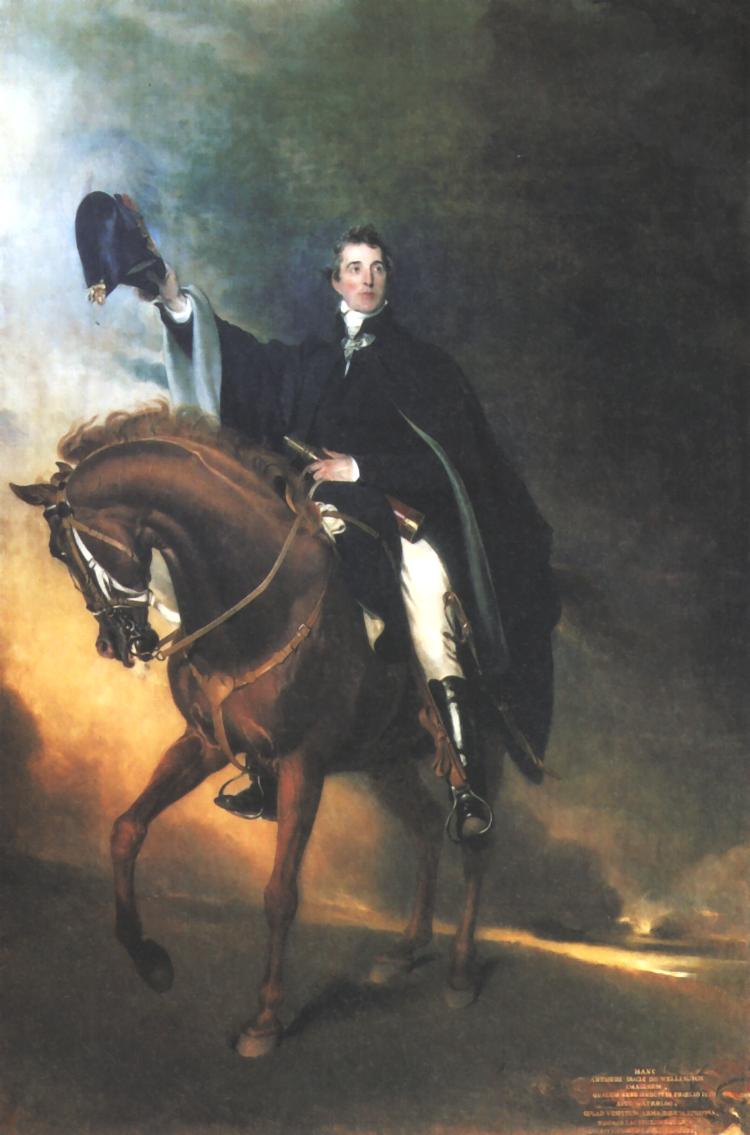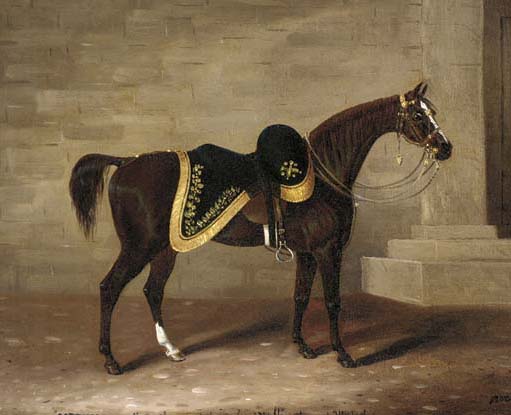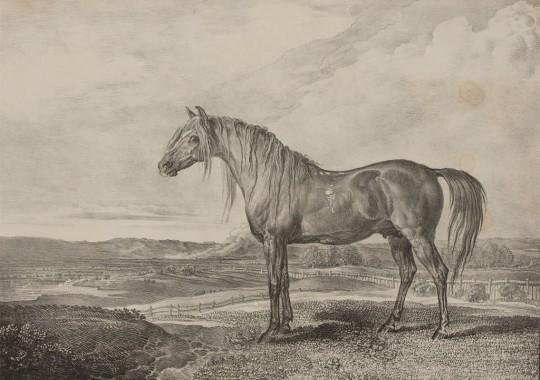Copenhagen was a chestnut stallion that became famous as the Duke of Wellington’s horse in the Battle of Waterloo. History tells us that he was a brave and fearless charger that successfully carried the Duke of Wellington during that battle, and in many others.

His dam was a mare called Lady Catherine and she was the mount of Lord Grosvenor in the Napoleonic Wars. He rode Lady Catherine during the Battle of Copenhagen in 1807. Lady Catherine was actually in foal during that battle, and Grosvenor sent her home when he discovered she was bred. They had been victorious in the Battle of Copenhagen, and the colt born in 1808 was named for that battle.
The Early Years
Copenhagen was only 15.1 hands tall and a heavier-boned horse. His sire, Meteor, was a Thoroughbred racehorse by Eclipse. Lady Catherine was an Arabian and Thoroughbred cross. Copenhagen’s bloodlines trace to the Darley Arabian and the Godolphin Arabian through both Meteor and Lady Catherine.
Lord Grosvenor sent Copenhagen to race on the turf, however, his 10 performances on the track were disappointing. In one respect, his time at the track was beneficial. Copenhagen’s exposure to these crowds helped create an unflappable characteristic in him that was beneficial on the battlefield. Grosvenor sold the colt to Sir Charles Stewart after his three-year-old year.
Off to War
In 1813, Copenhagen was shipped to Lisbon, Portugal to become Sir Charles’s mount in the Napoleonic Wars. The Duke of Wellington was the commander of Sir Charles Stewart’s unit and was certainly aware of all the horses his men were riding. He must have noticed something special in Copenhagen because when Sir Charles was short on cash and sold several of his horses, the Duke purchased him.
Copenhagen created some drama in the Duke of Wellington’s stables. He was difficult to handle, frequently kicked – and was so fast that no one saw the kick coming. But Copenhagen was also a funny horse. It is said that he often ate his hay while lying down.
Horse and man formed a strong bond though, and the Duke was the only one that could handle Copenhagen. So, he made sure to personally exercise him daily, even though he had 15 horses. They went foxhunting or explored the countryside. This built Copenhagen’s endurance too, making him a strong and fit horse for many battles during the Napoleonic Wars – the Duke of Wellington never lost a battle while he was riding Copenhagen.

Circa 1820 s or 1830s by Samuel Spode
Copenhagen at the Battle of Waterloo
The Battle of Waterloo was in Belgium on June 18, 1815 – Copenhagen was seven years old. Waterloo marked the final defeat for Napoleon Bonaparte and brought an end to his French empire.
Fame found Copenhagen because of the Battle of Waterloo. The Duke of Wellington fought in 60 battles during his military career, and the Battle of Waterloo was his last. Copenhagen became famous because of his contributions during the Battle of Waterloo.
The Duke was observing the enemy lines before the battle began. There was a stiff fence behind him with a line of his men behind that. Suddenly, some French soldiers appeared. He yelled to his men to get down and jumped Copenhagen over the fence and the men and back to safety.
During the battle, a shot went just above Copenhagen’s neck, and hit Lord Uxbridge, taking off his leg. Copenhagen carried the Duke of Wellington for 16 hours during the Battle of Waterloo without injury to either of them. The Duke dismounted when they were finally victorious and gave Copenhagen a pat on the rump. He rewarded the Duke by aiming one of his famous kicks at him, although luckily he missed that time.
Famous Horse
The pair remained in France after the Battle of Waterloo, and the Duke continued foxhunting on Copenhagen. The horse became well known for his antics, but he also liked the attention. Soon, the ladies the Duke socialized with were asking to ride Copenhagen, and the Duke made sure they completed their rides unscathed.
Copenhagen received a hero’s welcome when they returned to England in 1818. He continued to be a favorite with the ladies, and many had a strand of his hair in their jewelry. The Duke and Duchess had a country estate in Hampshire where Copenhagen lived in the best paddock on the property. He learned to love ladies quickly because the Duchess took him a piece of bread or cake every day, and soon the horse would let any lady ride him unassisted around the estate.
The Duke of Wellington also continued to ride Copenhagen until he officially retired him in 1828. The famous horse passed away in 1836 when he was 28 years old, he had been blind and deaf for several years, but the exemplary care he received helped him live to an advanced age. The Duke had him buried with full military honors and The Times ran an obituary for Copenhagen.

And the Rest is History
The Duke of Wellington went on to serve as the Prime Minister of Great Britain from 1828 to 1830. One has to wonder how the trajectory of his life might have changed if he had ridden a horse other than Copenhagen during the Napoleonic Wars. Certainly, their shared fame must have helped augment the Duke’s political career.
Copenhagen was a character, despite his decorated military career and fame from the Battle of Waterloo. He was hard to handle, in fact, the Duke of Wellington was one of few people that could handle him until the horse mellowed in his older age. But that’s what makes these horses special, isn’t it? There are parts of Copenhagen that we see in our own favorite horses. That extra spark that these horses have separates them from the rest of the herd.
Sources: Age of Revolution, Britannica (Battle of Copenhagen), Britannica (Arthur Wellesley), Globetrotting, and History.com.
